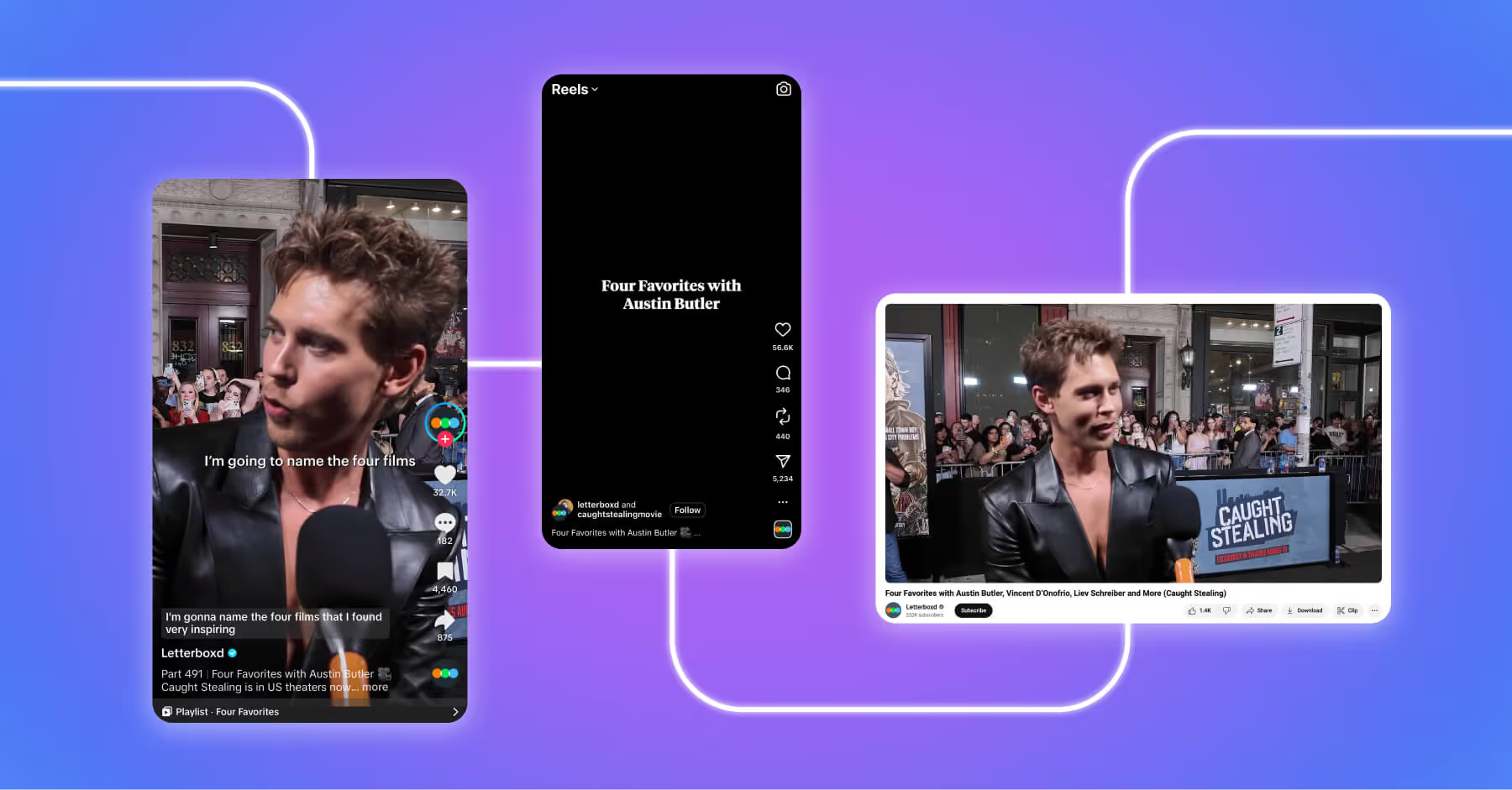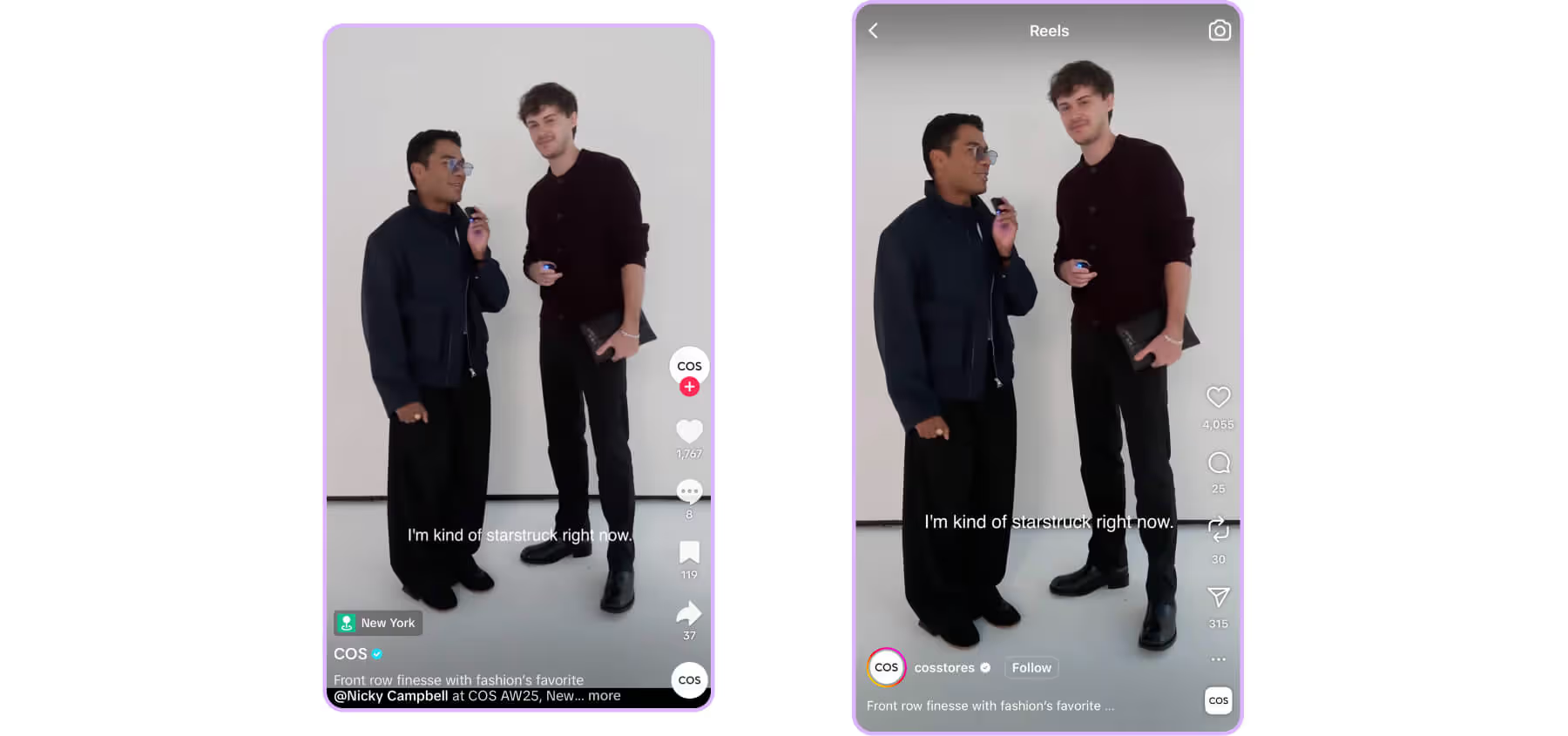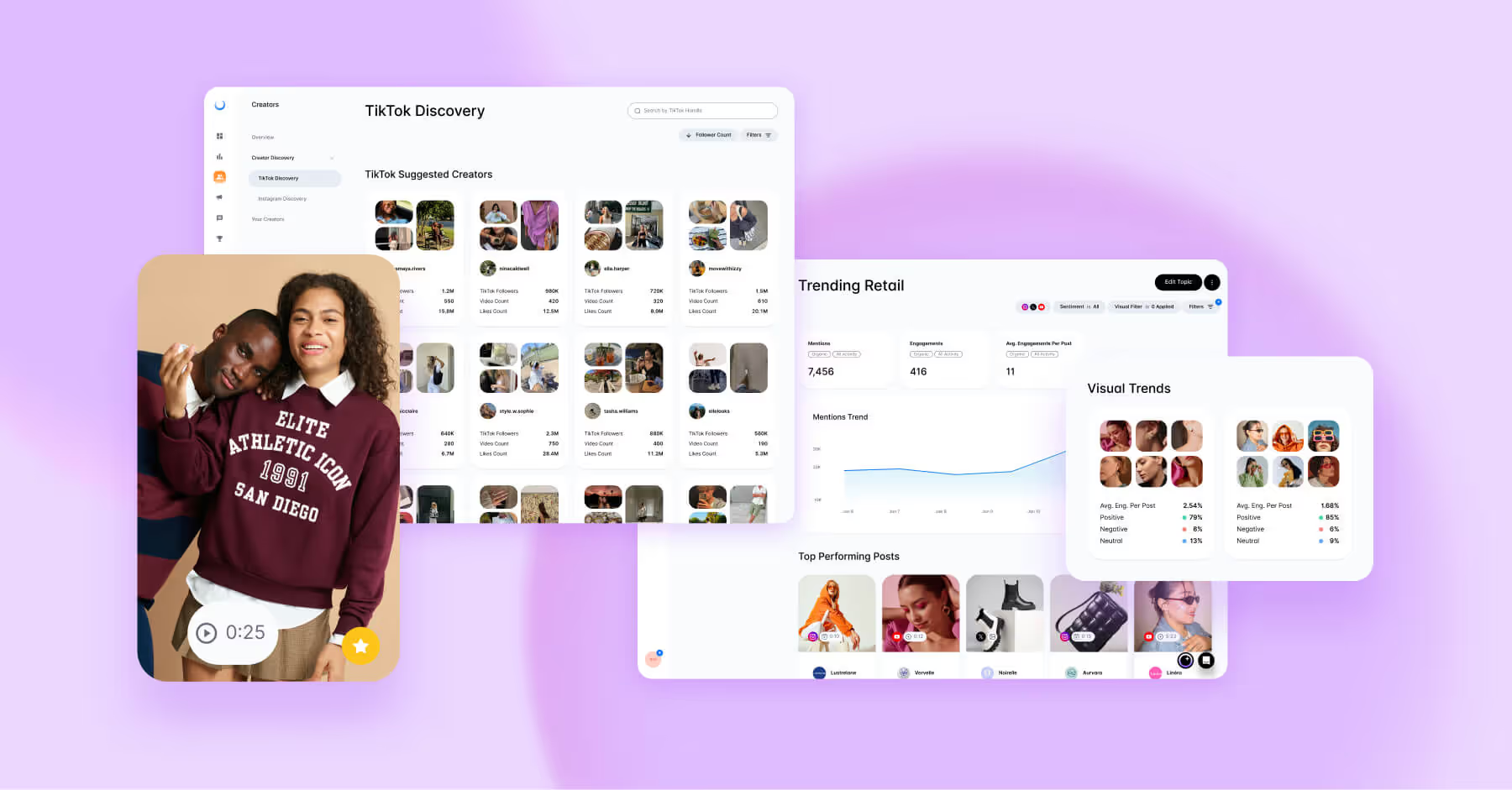Make Your Posts Go Further With Content Syndication
Discover smart strategies to syndicate social media content.

Content syndication is the practice of republishing or distributing your content across different platforms and channels to reach a wider audience. Social moves fast, and the content volume needed to maintain a presence across channels can be overwhelming. A strong content syndication strategy can play a powerful role in helping brands show up when and where they need to be.
By strategically re-sharing and repurposing top-performing posts, syndicating your social media content can help amplify your brand and maximize reach, reinforce key messages to parallel or new audiences, and get more value from the content you’ve already created.
Key Takeaways:
- Content syndication involves repurposing and redistributing content across platforms to extend its lifespan and reach.
- On social media, syndication helps brands maximize visibility, engagement, and ROI from content they’ve already created.
- Benefits include increasing brand awareness, driving more website traffic, and saving time on content creation.
- Following best practices like tailoring content for each platform, testing syndication frequency, and using paid amplification ensures your content resonates without overwhelming your audience.
What Is Social Media Content Syndication?
Social media content syndication is when an online brand republishes existing social media content like a blog article, infographic, or video, for other platforms or third-party channels, like YouTube or Medium. By syndicating your content, you’re increasing the chances that your content appears where your audience already spends time.
Why Is Content Syndication Important?
Content syndication allows you to extend your online content's visibility, reach, and engagement. It also lets you make the most of the content you already have, extending the content lifecycle of the assets you’ve already created.
Benefits of Content Syndication
When executed correctly, content syndication takes a social media strategy from good to great. It helps stretch your content further in terms of audience engagement and longevity, while boosting conversions and improving your website’s SEO.
Increase Brand Awareness
Publishing content across multiple high-traffic platforms and showing up consistently positions your brand as a trusted voice among users who might not discover you otherwise, which helps build your community and brand recognition.
Boost Website Traffic
Syndicated content should always guide readers back to your owned channels, creating new opportunities to convert visitors into subscribers, social media leads, or customers. If you’re sharing an article on a third-party website and consider it part of the buyer funnel, you don’t want the user’s journey to end there. You should include links back to your website, and if syndicating on social media, use organic calls-to-action and include a link in bio, like LikeShop, to direct users to relevant product pages, your homepage, and even your other social media platforms.
Enhance Social Media SEO
Search loves syndication, which means sharing syndicated content across platforms supports discoverability by boosting engagement and makes search engines more likely to discover your syndicated content. For example, Google recently announced that Instagram content from Business and Creator accounts is indexable in Google’s search engine results page (SERP), so optimizing social media SEO is a great way to increase your chance of being seen.
10 Content Syndication Tips
When syndicating your content, here are a few ways to ensure that you’re effectively repurposing it.
1. Tailor Content Per Platform
Similar to how bakeries will repurpose yesterday’s brioche into today’s bread pudding, repurposing content gives you an easy way to reach new audiences without starting from scratch. To maximize effectiveness, ensure you’re adjusting tone, visuals, and format for each network instead of posting the same asset everywhere.

2. Leverage Native Formats
A vital part of content syndication is modifying content natively for more reach. This means intentionally repurposing content, using tools like LinkedIn Articles, Twitter/X threads, and Instagram carousels to syndicate content natively for more reach. Be sure you’re using the correct social media image sizes, updated UTM parameters, adding alt text to images in articles and posts, and any other measures that make your content engaging for the reader or viewer.
3. Repurpose Long-Form Into Micro-Content
Break blogs, reports, or webinars into snackable clips, graphics, or quotes to syndicate across social media. For example, the Instagram algorithm favors Reels by prioritizing entertaining, educational, and visually engaging short-form content to increase watch time, shares, and replays.

4. Tag Partners and Collaborators
Tap into parallel audiences, expand visibility, and boost your reach by tagging brands, influencers, or contributors when syndicating content. This type of branded content allows brands to leverage collaborator credibility (who’ve already established trust with their audience) to build a better connection with their audience.
5. Schedule for Peak Engagement
Planning your content and using a scheduling tool to publish syndicated content when your audience is most active on each platform can help ensure you’re consistently showing up and meeting your audience where they are.
6. Add Platform-Specific CTAs
Drive clicks and conversions with platform-specific calls to action, whether it’s “swipe up,” “link in bio,” or “read more.” Including clear CTAs will create new opportunities in the social media marketing funnel to convert visitors into subscribers, leads, or customers.
7. Test Syndication Frequency
Re-share top-performing posts at different intervals to maximize lifespan without overwhelming followers. Ensure that you’re segmenting your content to track and compare metrics like engagement rate, reach and clicks, and optimizing based on results. If engagement stays strong at shorter intervals, you can re-share more often but, If engagement drops or unfollows rise, try extending the gap between re-shares.
8. Use Paid Amplification
Boost syndicated posts with targeted paid campaigns to amplify your reach, increase engagement, and test messaging. Although organic content is valuable, data supports strategies that take a hybrid approach as using paid boosts can significantly increase both reach and engagement.
9. Create Series or Themes
Brands are exploringa variety of themes and Instagram content ideas in their organic posts, like behind-the-scenes, product demos and tutorials, founder stories and UGC creator collaborations. Syndicating content as part of an ongoing series or pillar will engage audiences so they know to expect consistent value.

10. Track Platform-Level Performance
Creating engaging content and maintaining a consistent presence across socials is only part of an effective social media strategy. Unless you’re analyzing performance, you’re missing out on vital insights that come from monitoring engagement, reach, and referral traffic by channel.
Consistently monitoring and tracking these metrics will allow you to see which social platforms drive the strongest syndication ROI, adjust your strategy accordingly, and over time, improve your performance.
Content Syndication FAQs
Is content syndication considered paid media?
The short answer? It can be. Content can be syndicated across both organic and paid channels. This could look like boosting organic traffic, repurposing organic content for paid media or recycling collaborator content into an organic blog.
What’s the difference between organic and paid content syndication?
Organic content syndication is republishing or distributing the same content across multiple platforms or accounts without any additional paid sponsorship or boosting of content. Whereas, paid content syndication is paid media that is repurposing or republishing content from other channels.






